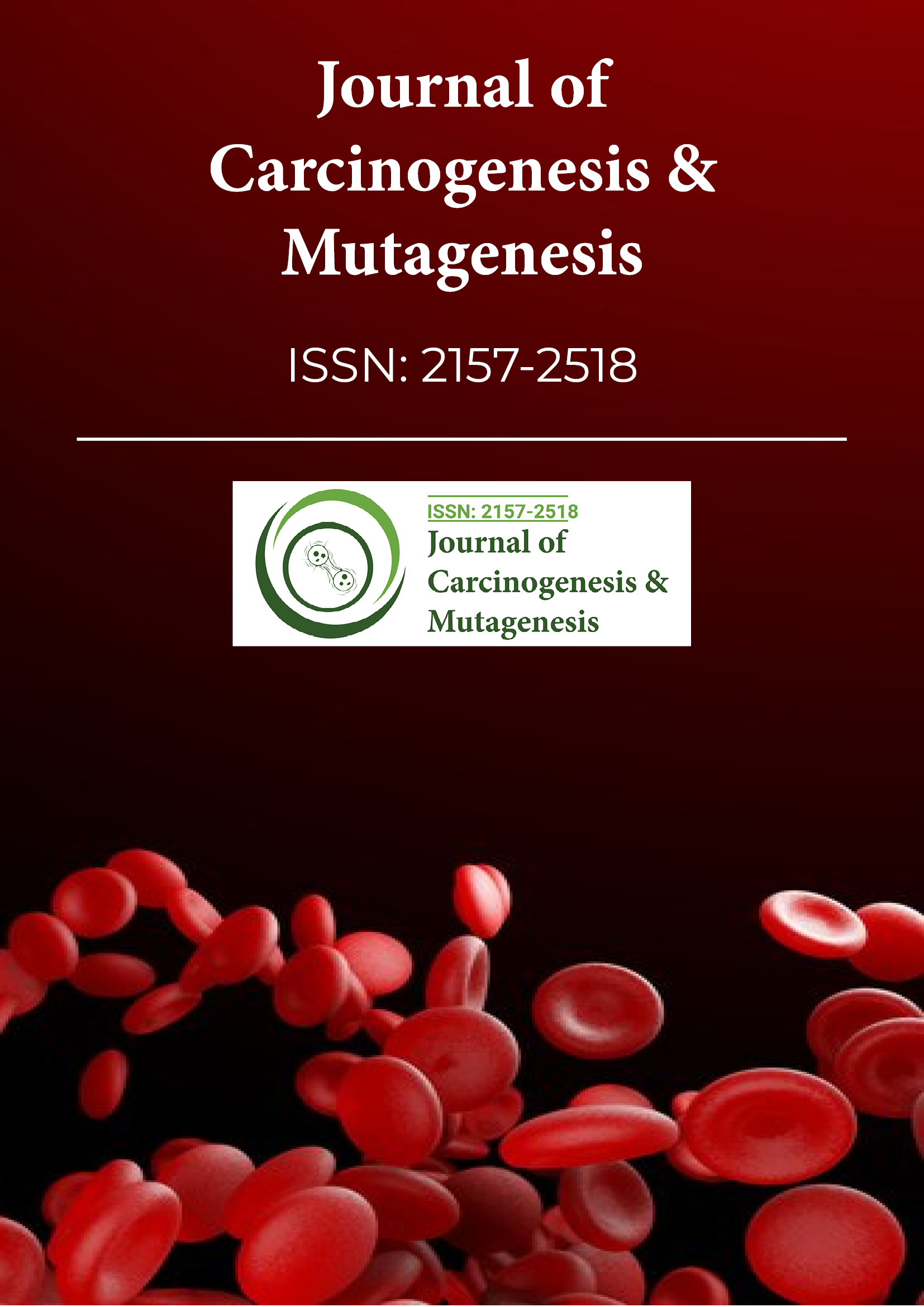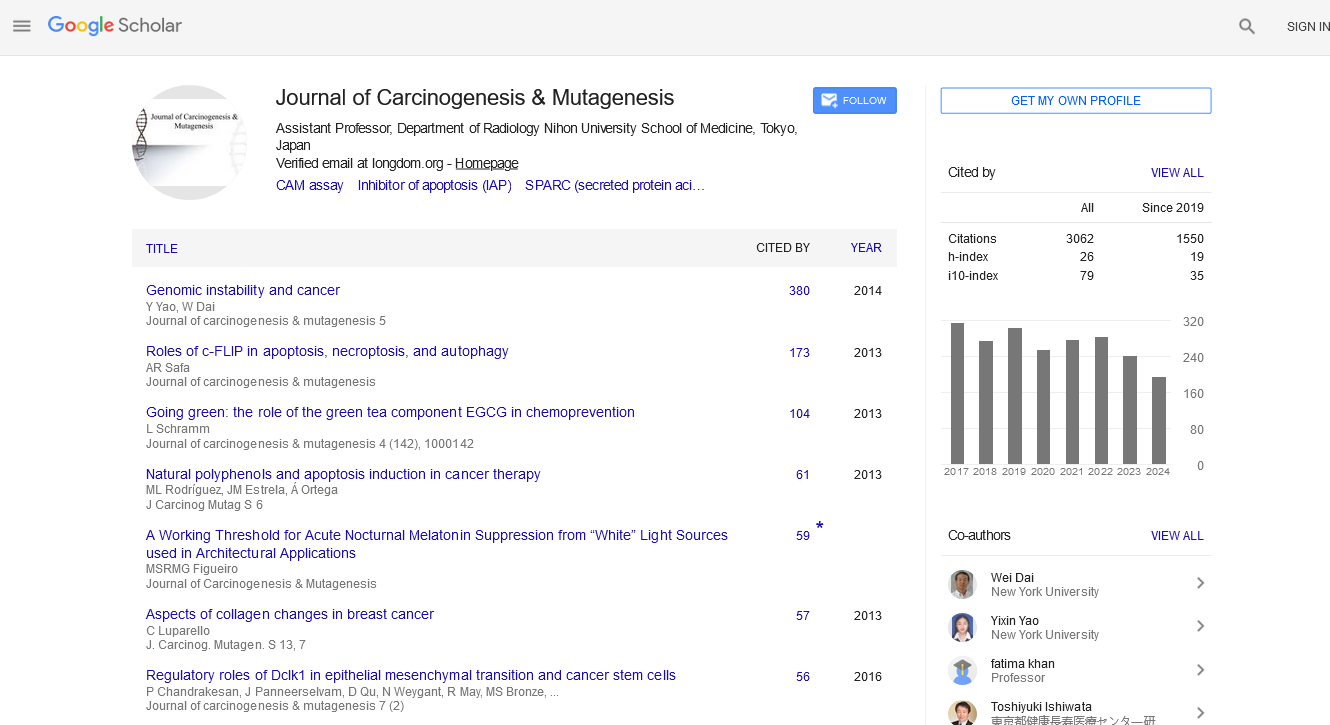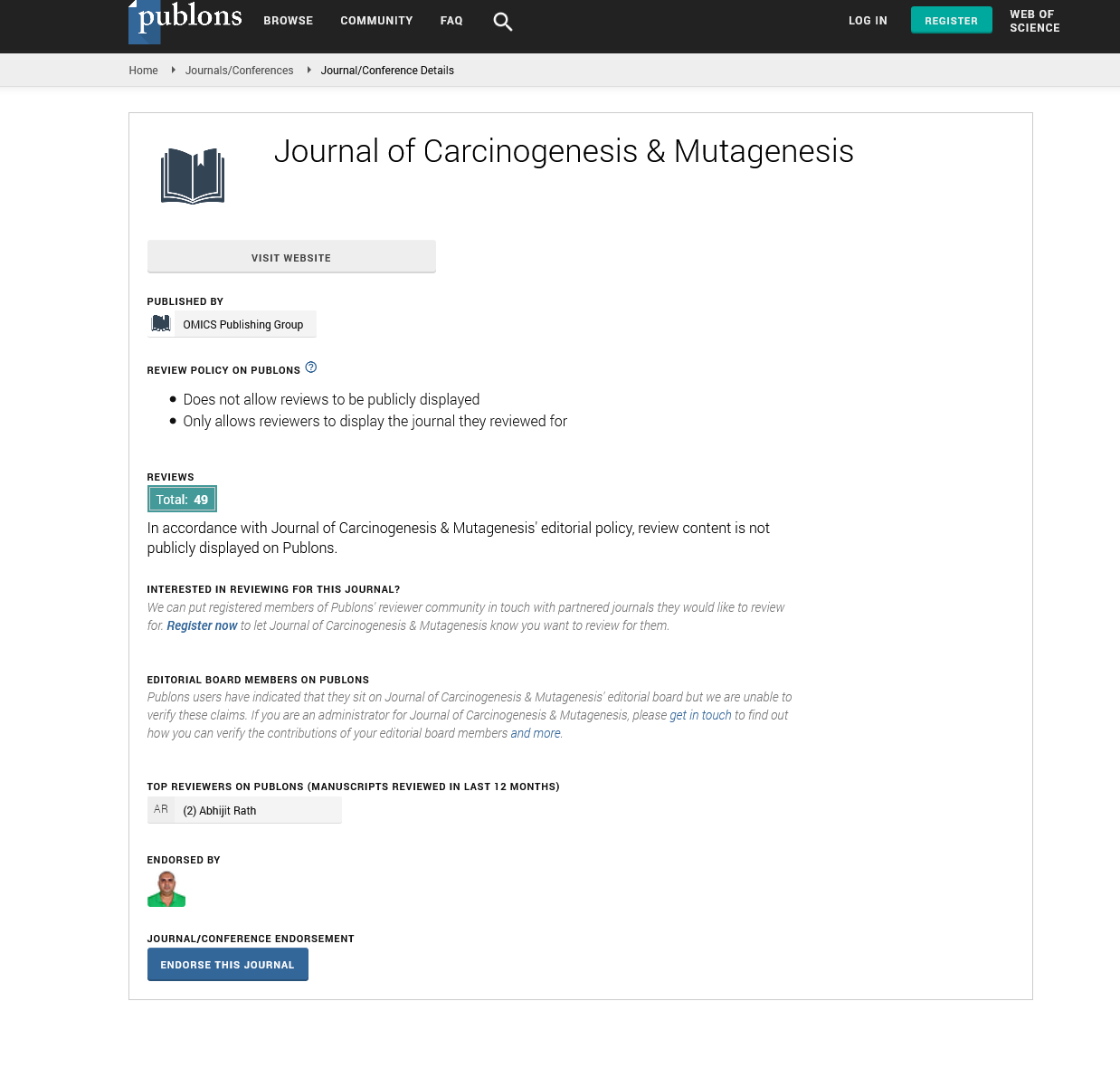Indexed In
- Open J Gate
- Genamics JournalSeek
- JournalTOCs
- Ulrich's Periodicals Directory
- RefSeek
- Hamdard University
- EBSCO A-Z
- OCLC- WorldCat
- Publons
- Geneva Foundation for Medical Education and Research
- Euro Pub
- Google Scholar
Useful Links
Share This Page
Journal Flyer

Open Access Journals
- Agri and Aquaculture
- Biochemistry
- Bioinformatics & Systems Biology
- Business & Management
- Chemistry
- Clinical Sciences
- Engineering
- Food & Nutrition
- General Science
- Genetics & Molecular Biology
- Immunology & Microbiology
- Medical Sciences
- Neuroscience & Psychology
- Nursing & Health Care
- Pharmaceutical Sciences
Perspective - (2025) Volume 0, Issue 0
Implications of Tumor Heterogeneity for Cancer Treatment
Maria Palmieri*Received: 30-Apr-2025, Manuscript No. JCM-25-29378; Editor assigned: 02-May-2025, Pre QC No. JCM-25-29378 (PQ); Reviewed: 16-May-2025, QC No. JCM-25-29378; Revised: 23-May-2025, Manuscript No. JCM-25-29378 (R); Published: 30-May-2025, DOI: 10.35248/2157-2518.25.S50.004
Description
Tumor heterogeneity is a defining feature of cancer that significantly impacts diagnosis, treatment response, and disease progression. It refers to the existence of diverse subpopulations of cancer cells within the same tumor or among tumors of the same type in different patients. This diversity arises from genetic, epigenetic, and microenvironmental factors and poses a major challenge to the development of effective, durable therapies.
At the molecular level, tumor heterogeneity can be classified into intertumoral and intratumoral heterogeneity. Intertumoral heterogeneity refers to the differences between tumors in different patients, even when the tumors originate from the same tissue type. These differences can be driven by variations in gene mutations, signaling pathway activation, or response to external stimuli. Intratumoral heterogeneity, on the other hand, refers to the diversity among cancer cells within a single tumor mass. This form of heterogeneity can be spatial, where distinct regions within a tumor display unique genetic profiles, or temporal, where the tumor’s composition changes over time due to selective pressures such as therapy.
The emergence of next-generation sequencing technologies has provided deeper insights into the extent of tumor heterogeneity. Studies have shown that different regions of the same tumor may harbor distinct subclonal mutations, which evolve over time. This evolutionary process allows certain clones to become dominant, especially under therapeutic pressure, contributing to drug resistance and disease recurrence. The clonal evolution model suggests that tumors originate from a single cell and, as they grow, acquire new mutations that give rise to genetically distinct subpopulations. These subclones can coexist and compete, and their evolutionary trajectories can determine the clinical outcome.
In addition to genetic variations, epigenetic alterations and differences in the tumor microenvironment also contribute to heterogeneity. Epigenetic changes such as DNA methylation and histone modification can regulate gene expression without altering the DNA sequence, leading to phenotypic diversity. Moreover, the tumor microenvironment, which includes immune cells, fibroblasts, blood vessels, and extracellular matrix components, can influence tumor cell behavior and promote adaptive responses. For instance, cancer-associated fibroblasts and immune cells can secrete cytokines and growth factors that support tumor growth, invasion, and immune evasion.
In conclusion, tumor heterogeneity is a fundamental aspect of cancer biology that influences clinical outcomes and therapeutic strategies. Ongoing research is focused on decoding the complexity of tumors through advanced genomic, transcriptomic, and proteomic analyses. A deeper understanding of the dynamic interactions between cancer cells and their microenvironment, along with the integration of multi-omics data, will be essential for the development of more effective, durable, and personalized cancer treatments. Addressing tumor heterogeneity is not only critical for overcoming drug resistance but also for improving the overall prognosis and quality of life for cancer patients worldwide.
Citation: Palmieri M (2025). Implications of Tumor Heterogeneity for Cancer Treatment. J Carcinog Mutagen. S50:004.
Copyright: © 2025 Palmieri M. This is an open-access article distributed under the terms of the Creative Commons Attribution License, which permits unrestricted use, distribution, and reproduction in any medium, provided the original author and source are credited.


